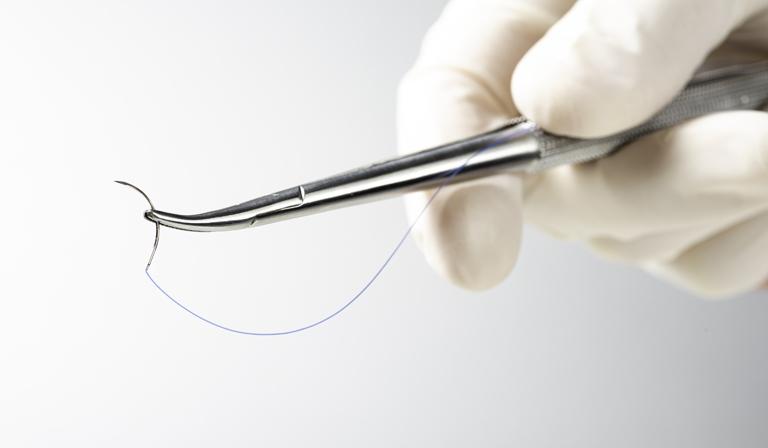

· By Trevor Horne
Types Of Surgical Sutures Explained
When doctors need to close incisions or wounds on tissue or skin, surgical sutures are used. This procedure consists of sewing a wound or incision shut with a length of thread that has a needle attached to one end. When it comes to suturing and sutures, there are a number of materials available. Depending on the procedure or the wound, your doctor will choose what they feel is appropriate material.
Let's take a look at the different types of sutures available to today's physicians, surgeons, PAs, etc.
Suture Types
There are different classifications for sutures. If you want to classify them simply by material, suture material can be either non-absorbable or absorbable.
- Not absorbable – At a later date (after sewing you up), your doctor will need to remove these stitches. In some cases, however, they may be permanently left in.
- Absorbable – Your body naturally digests these sutures thanks to tissue enzymes, so they don't require removal by your doctor.
Sutures can be classified by material structure.
- Braided – Several threads are braided together for this type of suture. Though there may be an increased risk of infection, these braided sutures offer better security.
- Monofilament – Here, a single thread makes up the suture material, making it pass through tissue more easily.
Finally, sutures can be classified as either being made from synthetic material or natural material. This isn't a particularly useful distinction, however, since all suture material is sterilized.
Absorbable Sutures
Including neurological and cardiovascular procedures, non-absorbable sutures frequently are used to repair soft tissue. Here are some non-absorbable suture types:
- Polyester
- Silk
- Polypropylene
- Nylon
Absorbable Sutures
The following are types of absorbable sutures:
- Polyglactin
- Poliglecaprone
- Polydioxanone
- Gut
Suture Techniques and Selection
Now you know that there are numerous suture types. But there are also varying techniques of suturing. Here are some of them:
- Subcutaneous sutures
- Purse-string sutures
- Buried sutures
- Deep sutures
- Interrupted sutures
- Continuous sutures
Depending on the suture strand’s diameter, suture material is graded. To indicate the material diameter, you will note that the “O” is preceded by a number in this grading system. The smaller the diameter of the suture strand, the higher the number.
Additionally, there can be various features where the needle is concerned (which is attached to the suture material). It can have a non-cutting or a cutting edge and can be of various sizes. Scarring may be reduced by using smaller needles. With each stitch, however, larger needles can close more tissue.
When It's Time to Remove Those Sutures
Where the sutures are located can have an influence on when they will be removed. General guidelines include the following:
- 14 to 21 days – soles of feet or palms of the hands
- 10 to 14 days – hands or feet
- 10 to 14 days – legs
- 7 to 10 days – arms
- 10 to 14 days – trunk or chest
- 3 to 5 days – face
- 7 to 10 days – scalp
Looking for Surgical Sutures?
Shop ProNorth Medical Corporation for the sutures you need. We also carry a variety of PPE products, as well as other medical supplies, dental, and veterinary products. Would you like to save money? Check out our current clearance items here.
